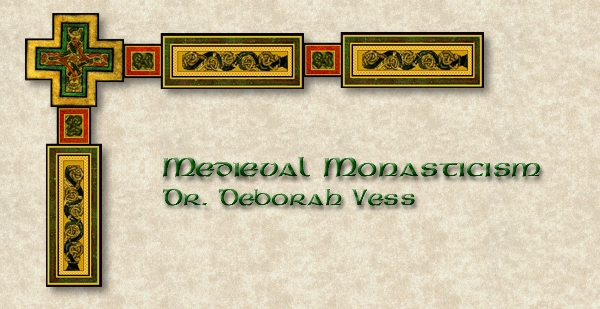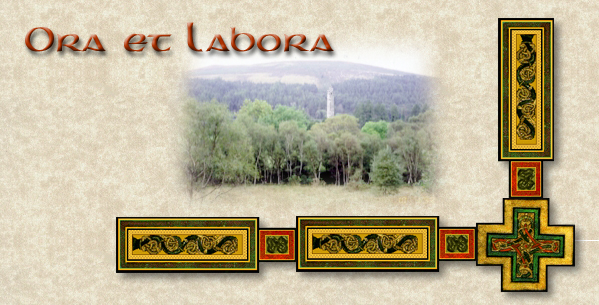
Mary and Martha:
The Life of St. Mary the Egyptian in its historic context
OBJECTIVES:
1. Be able to discuss the theology of the Old and New Testaments in terms of Judeo-Christian notions of women.
2. Be able to discuss the various forms of religious life for women as depicted in the Bible and also in the late Roman Empire.
3. Be able to discuss the meaning of the words "widow" and "virgin" in late Roman antiquity, and also to cite examples of well-known consecrated widows and virgins from history.
4. Be able to discuss the Life of St. Mary the Egyptian, to answer the study questions for this text, and also to contrast her life as a desert hermit with other forms of religious life for women in the late Roman empire.
BIBLIOGRAPHY:
Ambrose of Milan. On Virginity. Toronto: Peregrina Publishing Company, 1991.
Jo Ann McNamara. "Muffled voices: The Lives of Consecrated Women in the Fourth Century." In Distant Echoes: Medieval Religious Women. Kalamazoo: Cistercian Publications, 1984.
----- Sisters in Arms: Catholic Nuns Through Two Millennia. Cambridge; Harvard University Press, 1996.
See especially section I for this unit.
Joan Peterson, trans. Handmaids of the Lord: Holy Women in Late Antiquity and the early Middle Ages. Kalamazoo: Cistercian Publications, 1996.
This text contains a number of primary source documents, including the letters of Jerome to Eustochium and other holy women discussed in this unit.
OUTLINE
I. Biblical precedents for the lives of Holy Women
A. Eve
B. Mary
C. The Samaritan woman
D. Martha and Mary of Bethany, sisters of Lazarus
i. The vita activa
ii. The vita contemplativia
II. Forms of religious life for women in late antiquity
A. The constraints of law: the Augustan marriage laws
i) Domitian
ii) Constantine
B. The biblical evidence of the social status of holy women
i. Martha and Mary
ii. Mary, who anointed Christ=s feet
iii. Lydia
C. Later evidence for the social status of Holy Women
i) Macrina
ii) Paula and Eustochium
iii) Melania the Younger
D. Paul on marriage
E. Syneisacticism and the community of Acts
F. Peter and the Orders of Widows
G. Virgins
i) ancient precedents
ii) their social and religious status
iii) women who became "men"
a) Perpetua
b) Thecla
c) Anastasia
d) Tertullian
e) Cyprian of Carthage
f) Montanus, Priscilla, and Maximilla
g) Phoebe
iv) meaning of the word "virgin" in antiquity
a) from birth
b) widowhood and renunciation
i) and Macrina?
c) chaste marriages
i) Andronius and Athanasia
ii) Amoun and his wife
iii) Melania the Younger
d) spiritual virginity
i) and martyrdoms: Ancyra and Antioch
a) Theodora
ii) Jerome's thoughts
e) social suspicion: Indica
H. What the texts say about why women became "virgins"
i. Historical examples
a) Jerome's sister
b) Paula and Eustochium
I. Women in Household communities
i. Lydia
ii. Melania the Younger
iii. Paula and Eustochium
iv. Marcellina
J. Women's communities attached to men's communities
i. Pachomius and Mary
ii. Amma Talis
iii. Cassian
III. Women in the Desert II:
A. The Life of St. Mary of Egypt
i) Biblical paradigms in the Life (see study questions)
ii) repentance and salvation
IV. Summary: Women in late Roman Antiquity
Photo by Dr. Vess.
